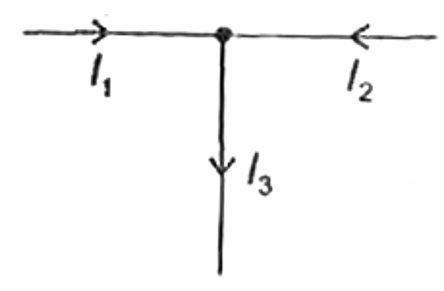Out of given four waves (1),(2),(3) and (4)
y=asin(kx+ωt) .(1)
y=asin(ωt−kx) ..(2)
y=acos(kx+ωt) ..(3)
y=acos(ωt−kx) .(4)
emitted by four different source S1,S2,S3 and S4 respectively, interference phenomena would be observed in space under appropriate conditions when
source S1 emits wave (1) and S4 emits wave (2)
source S3 emits wave (3) and S4 emits wave (4)
source S2 emits wave (2) and S4 emits wave (4)
S4 smits waves (4) and S3 emits waves (3)
The correct Answer is:C
Step by step video, text & image solution for Out of given four waves (1),(2),(3) and (4) y=asin(kx+omegat) .(1) y=asin(omegat-kx) ..(2) y=acos(kx+omegat) ..(3) y=acos(omegat-kx) .(4) emitted by four different source S_1,S_2,S_3 and S_4 respectively, interference phenomena would be observed in space under appropriate conditions when by Physics experts to help you in doubts & scoring excellent marks in Class 11 exams.
Topper's Solved these Questions
- BOOK - CENGAGE PHYSICSCHAPTER - SUPERPOSITION AND STANDING WAVESEXERCISE - Fill in the Blanks Type34videos
SUPERPOSITION AND STANDING WAVES
- BOOK - CENGAGE PHYSICSCHAPTER - SUPERPOSITION AND STANDING WAVESEXERCISE - Subjective Type1videos
SUPERPOSITION AND STANDING WAVES
- BOOK - CENGAGE PHYSICSCHAPTER - SUPERPOSITION AND STANDING WAVESEXERCISE - Multiple Correct Answers Type5videos
SUPERPOSITION AND STANDING WAVES
- BOOK - CENGAGE PHYSICSCHAPTER - SOUND WAVES AND DOPPLER EFFECTEXERCISE - Integer16videos
SOUND WAVES AND DOPPLER EFFECT
- BOOK - CENGAGE PHYSICSCHAPTER - THERMODYNAMICSEXERCISE - 241videos
THERMODYNAMICS
Similar Questions
Knowledge Check
- Question 1 - Select One or More
Two waves y1=asin(ωt−kx) and y2=acos(ωt−kx) superimpose at a point :
AThe resultant amplitude is √2aBIf l is the intensity of each source then Imax=2lCThe resultant wave leads y1 by a phase angle of π4DData insufficient to arrive at options (B) and ("C") - Question 2 - Select One
Three waves y1,y2,y3 are given by y1=Asin(Kx−ωt),y2A=sin(Kx+ωt)andy3=Asin(Ky−ωt). Which one of the following represents wave ?
Ay1+y2+y3By1+y3Cy1+y2Dy2+y3 - Question 3 - Select One
Which two of the given transverse waves will give stationary waves then get superimposed?
z1=acos(kx−ωt) .(A)
z2=acos(kx−ωt) .(B)
z3=acos(ky−ωt) .(C )AAandBBAandCCBandCDany two
If the waves of the form y=asin(ωt−kx) nad y=acos(kx−ωt) are superposed, the resultant wave will have amplitude
View SolutionTwo waves are given byy1=asin(ωt−kx) and y2=acos(ωt−kx). The phase difference between the two waves is
View SolutionWhich two of the following waves are in the same phase?
y=Asin(kx−ωt)
y=Asin(kx−ωt+π)
y=Asin(kx−ωt+π/2)
y=Asin(kx−ωt+2π)View SolutionThe phase difference between the waves y=acos(ωt+kx)andy=asin(ωt+kx+π2) is
View SolutionTwo waves are given by y1=asin(ωt−kx) and y2=acos(ωt−kx). The phase difference between the two waves is -
View Solution


